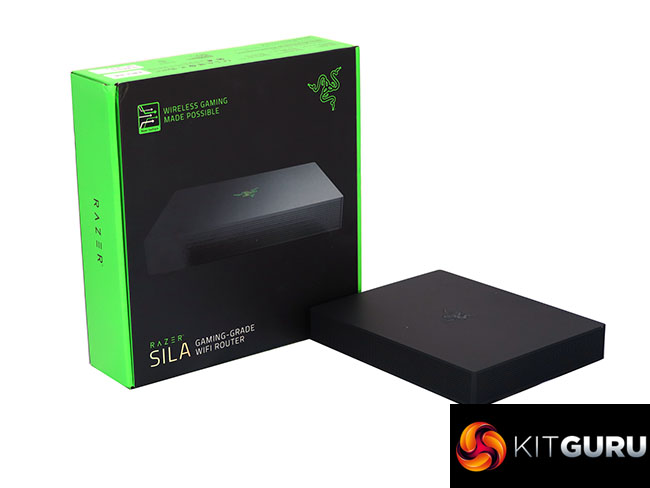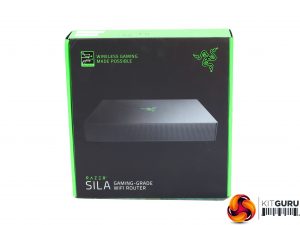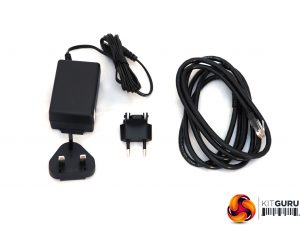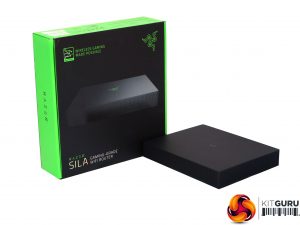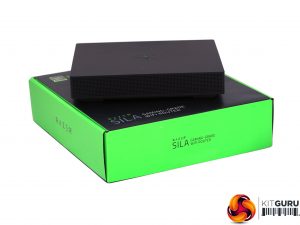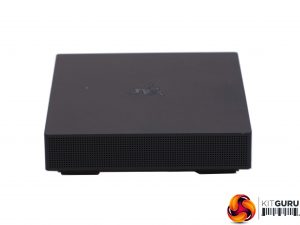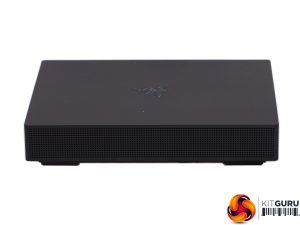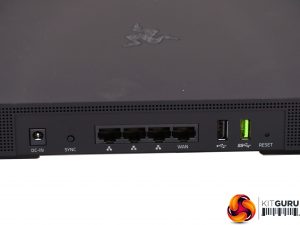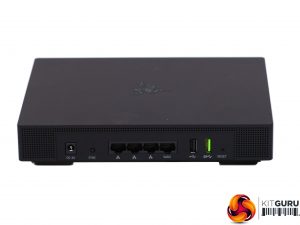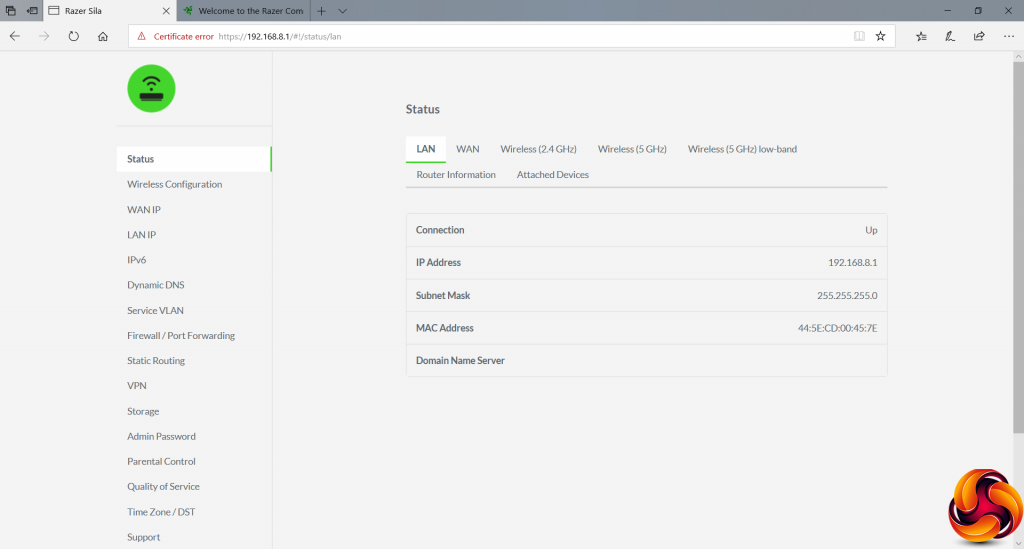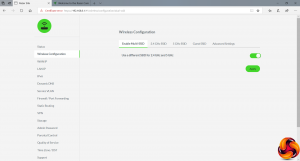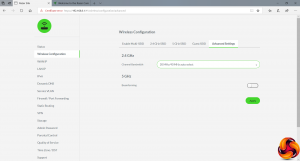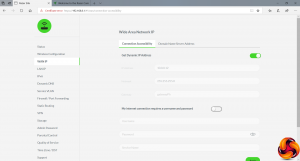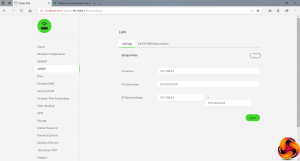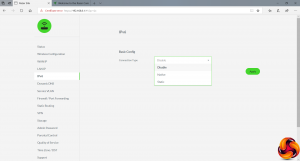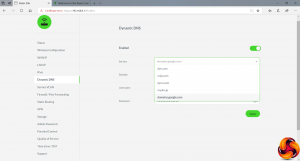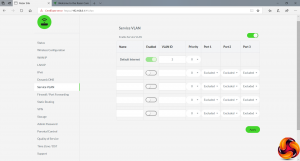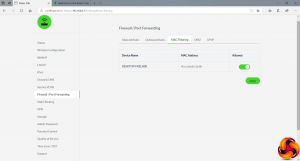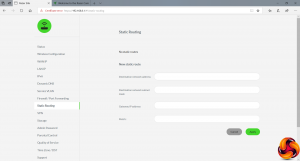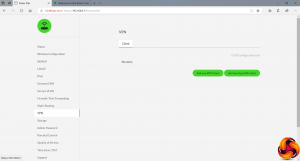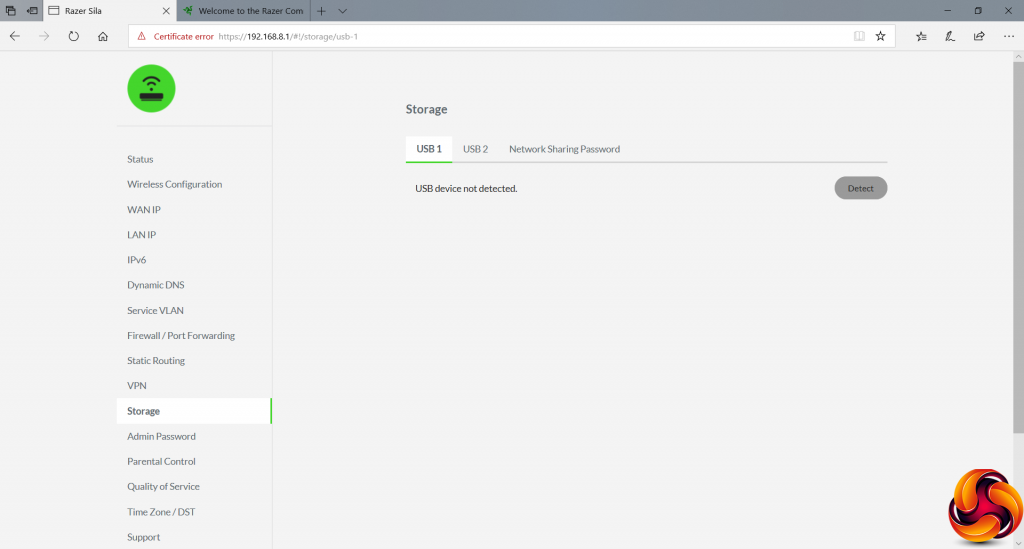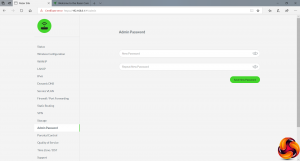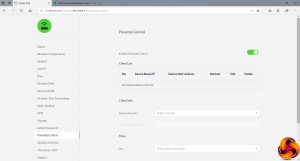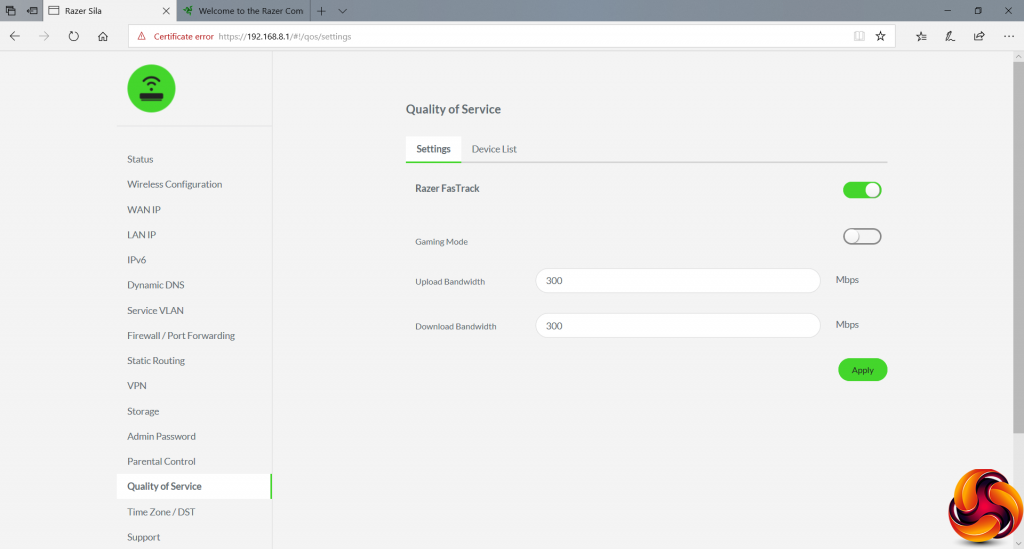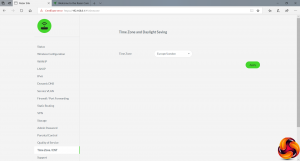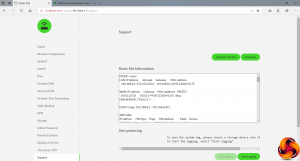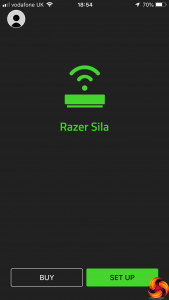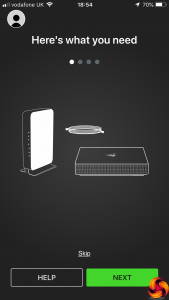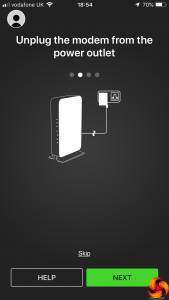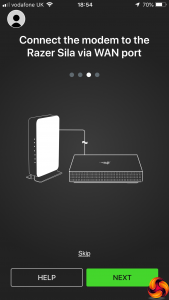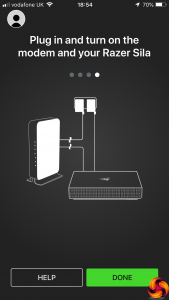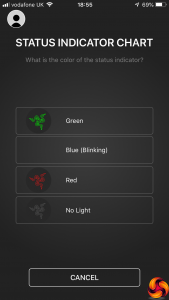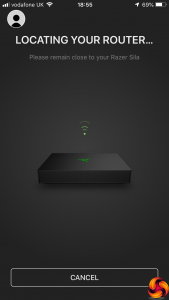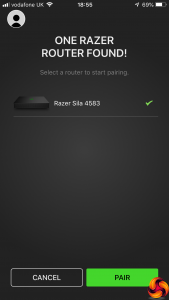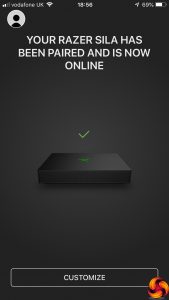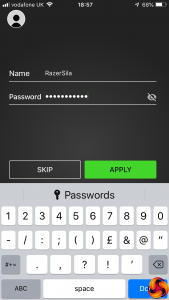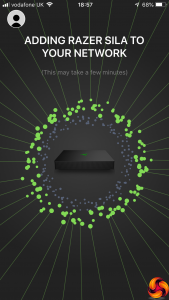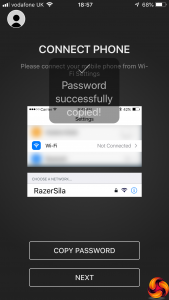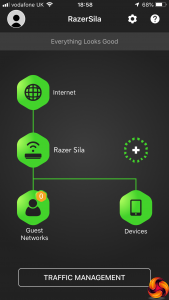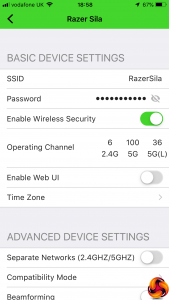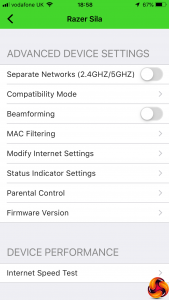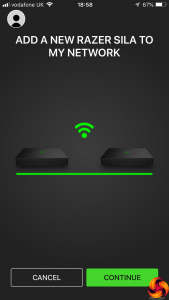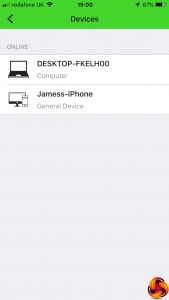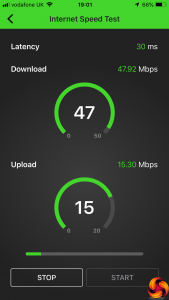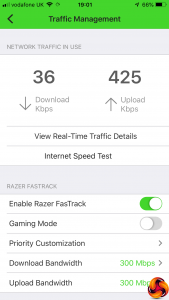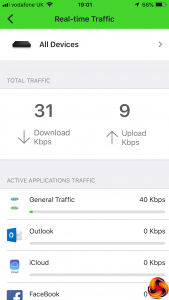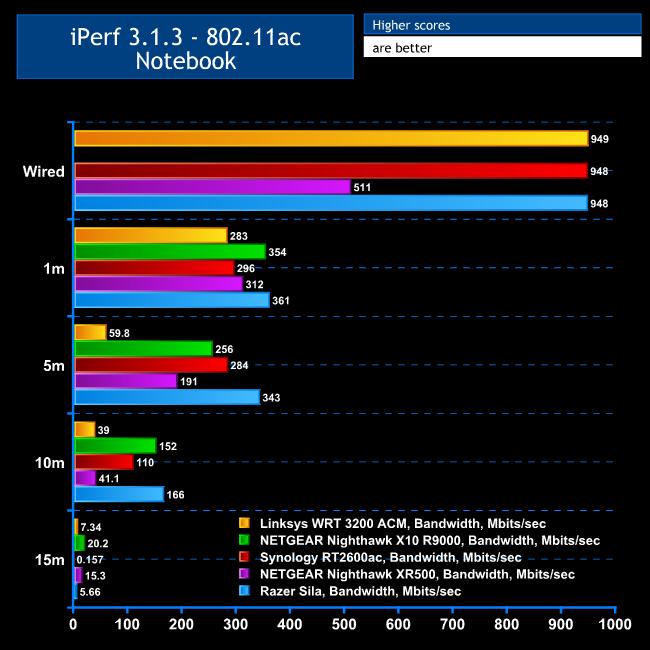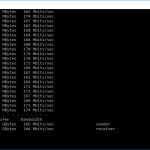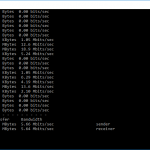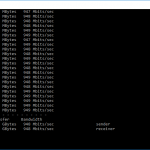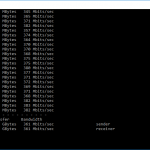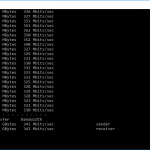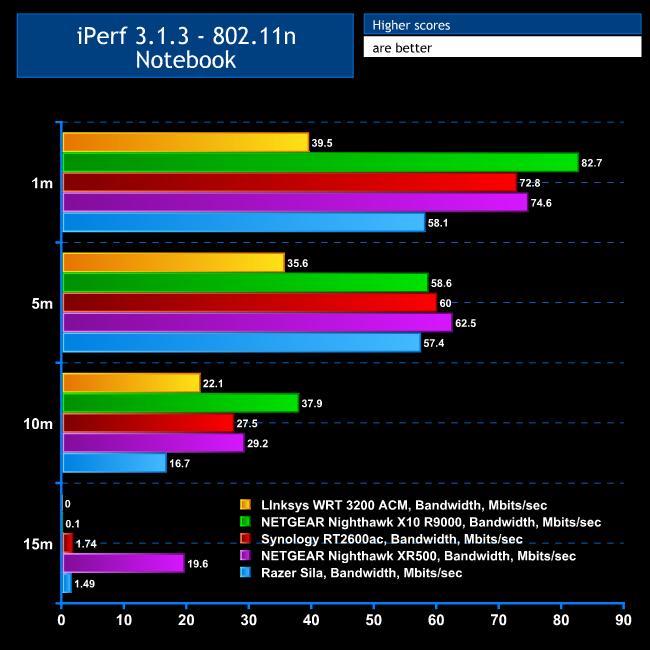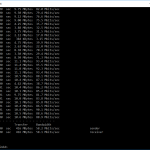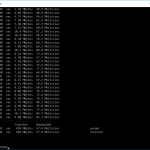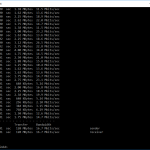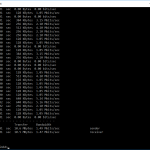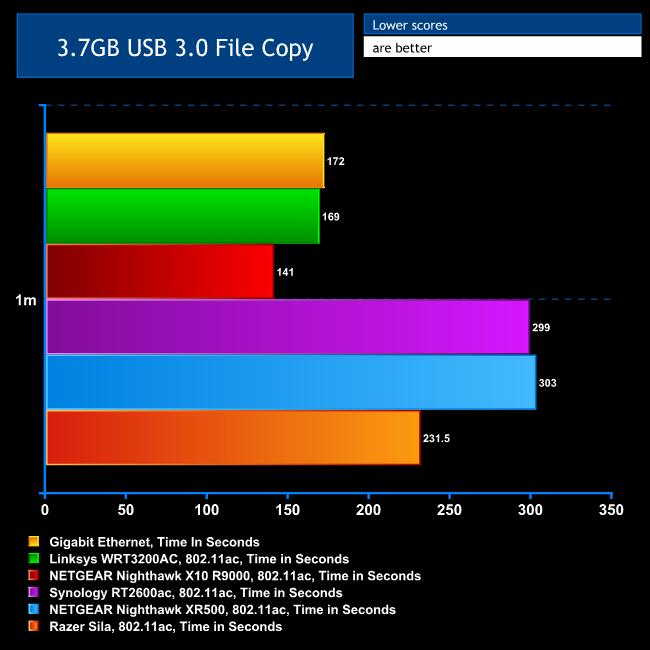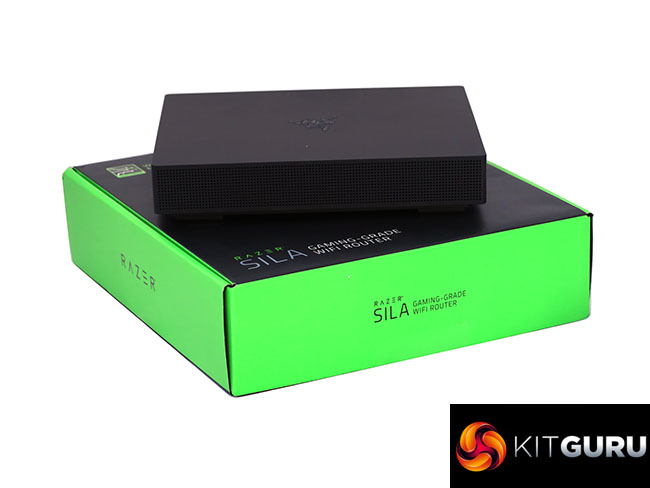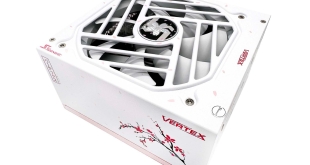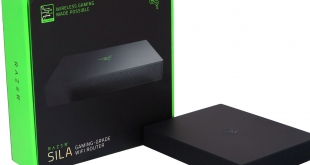
Razer has become a well-known brand in gaming circles, with its laptops, keyboards, mice and headsets garnering considerable plaudits for their design and capabilities. Now Razer is expanding its portfolio further still with its first router, called the Sila. The word “Sila” can mean lots of things, but we suspect the one most in Razer's mind refers to an Arabic genie.
So presumably this is meant to be a router that can work miracles, and Razer definitely isn't tentatively putting its toe into this area of the market. The Sila has a relatively high specification, with an AC3000 wireless rating. This is because it's a tri-band router, with two 5GHz radios and one running at 2.4GHz, served by nine internal antennas.
The 5GHz 802.11ac radios have plenty of bandwidth available, too. One provides 1,734Mbits/sec, and the other 866Mbits/sec. The 2.4GHz 802.11n radio operates at a more pedestrian 400Mbits/sec, but this is fairly typical.
The party trick is the facility to use one of the 802.11ac radios as a backhaul to a second Sila, or even a third, to form a mesh WiFi system spanning a much larger area than one router can handle on its own.
Razer also boasts of traffic management features for prioritising different types of data, support for DFS channels to help avoid WiFi congestion, and an app that provides comprehensive management options via your smartphone.
It all sounds very promising on paper, although the router also relatively pricey at £280. Let's find out if the Razer Sila can turn your purchasing gold into magical feats of WiFi excellence.
Price: £279.99
Specification:
- Wireless protocols: MU-MIMO with 802.11b/g/n 2.4GHz, 802.11a/n/ac 5GHz
- Performance: AC3000 (1734 + 866 + 400 Mbits/sec)
- Antenna Configuration: 9×9 Internal Antennas for 2.4/5GHz
- Ports: 4 x Gigabit Ethernet (1 WAN), USB 3.0, USB 2.0
- Modem Support: VDSL/ADSL 2+ or cable
Razer is a brand very much focused on gamer chic, and from the box onwards, the motifs are a striking combination of black and bright luminous green. The Razer Sila bundle includes the usual power supply with UK and European plug options, plus an Ethernet cable.
Unlike most routers, the Sila does't bristle with unsightly antennas. Instead, it's a dark black slab around the same size as a hardback book, because the antennas are all held internally.
Although the box includes a host of eye-catching green panels, the Sila itself is entirely black from every angle. The only splash of colour is the Razer logo on top. This glows red during startup, then flashes blue a few times, before turning to Razer's signature green. This signals that all is well and the Sila is operating as it should be.
The rear hosts a typical array of ports, although not a particularly generous quantity thereof. There are four Gigabit Ethernet connections, one of which is dedicated for the broadband WAN. Then there's USB 2.0 and USB 3.0.
The SYNC button is not for WPS, as you might expect, but for use with the Sila's main party trick – mesh networking. If you buy more than one Sila, you can press this button to combine them into one WiFi mesh, for much wider wireless coverage. Unfortunately, we were only sent one unit so couldn't test this feature, but it's potentially a potent capability since the Sila is tri-band and can use one of its 802.11ac channels for backhaul.
There's also a recessed reset button at the end next to the USB ports. The one thing notable by its absence is a power switch. If you want to turn the Sila off, you have to pull out the power cord.
Overall, the Sila looks stylish and the mesh capability could be quite valuable, albeit expensive, but we would have liked to see a few more Gigabit Ethernet ports so your gaming LAN can have more than three systems connected.
After logging into the Web interface with the default password (which is actually just “password”), you're met with a fairly workmanlike administrative front end, starting with the Status screen. This is broken into sections covering the LAN, WAN, and three WiFi radios. You can also see some basic information on the Sila's firmware version, and a list of devices attached via the various wired and wireless interfaces.
The Wireless Configuration lets you choose whether to use one SSID across all WiFi types, or a different one for each. You can also create a guest SSID, and choose how the 2.4GHz channels are allotted, as well as enable Beamforming for 5GHz. The latter can improve performance in some situations.
The WAN IP section lets you choose between automatic configuration and entering the IP addresses for the router and DNS servers manually. The LAN IP settings let you select the address range to use for the internal network, and enable bridge mode. You can also reserve specific IP addresses for clients on the network – for example so your network printer or NAS box always uses the same address.
Next along are options for enabling an IPv6 connection, then Dynamic DNS. The latter includes support for the usual suspects, such as dyn.com and noip.com, plus Google's service.
The facility to set up VLANs is quite an advanced for a gaming router, as it allows you to group client devices together, although with only three ports to play with there are limits to the extent of this functionality.
The Firewall / Port Forwarding section provides facilities to make internal systems visible to the outside world via ports or port ranges, so you can present a game server across the Internet. You can also set up a DMZ with full access, enable MAC filtering to restrict access to clients with known MAC addresses, and turn on UPnP.
Static Routing is also available – something few gamers will probably use. The VPN capabilities might be more frequently called upon. However, the Sila can only act as a VPN client, not a server, although it does support both PPTP and OpenVPN connections.
You can plug a storage device into either of the USB ports and then share it across the network, with password protection.
The Admin Password just provides the option to change the admin password, unsurprisingly. But the Parental Control section lets you configure access profiles for individual devices based on times of day and days of week.
Finally, we come to one of the Sila's much-vaunted bonus features – Quality of Service, which Razer has branded FasTrack. This lets you specify overall upload and download speeds, but more importantly, if you enable Gaming Mode, you reveal further tabs for prioritising certain types of traffic and even specific games.
By default, games get the highest priority, music and video streaming come next, then file transfer and sharing come bottom, with all other traffic in between the latter two categories.
You can also give individual applications their own priorities, with 59 presets included. We were impressed to see that even quite recent titles like Rainbow Six: Siege were included. Often, application-based QoS systems work from really antiquated software lists. But Razer is properly gaming focused, so their list seems well stocked, including favourites like Fortnite, CS:GO, Rocket League and League of Legends.
The last two options include the ability to set the time zone for the router's internal clock, whilst Support presents a system log.
The Razer Sila smartphone app provides another way to set up your router, and potentially a more user-friendly one. First the app guides you through physically connecting the Sila to your modem and the power.
Next, you share your location so that the setup gets the right time zone settings, after which you're given some information on what the status lights mean. Then the app will begin looking for your router and, once found, give you the option to pair your smartphone with it.
Once your router and smartphone are paired, you are prompted to change the SSID and password, after which it is “added to your network”. Then you are given the option to copy the SSID password and are sent to your smartphone's WiFi settings to connect.
The app's management interface is rather attractive and graphical. You can click on your router to configure Basic and Advanced settings all from one page. Broadly the same range of options are available as via the Web interface.
If you click on the Devices icon in the main interface, you can see a list of client systems connected to the network. The Internet Speed Test option underneath the Advanced Device Settings for the router lets you assess overall Internet performance.
Most impressively, the Traffic Management button on the main interface lets you configure FasTrack in the same way as the Web interface. You can even drill down to see in real time which applications are taking the most bandwidth, and configure priorities for individual applications as well as application types.
In other words, you can do pretty much everything you need without ever having to use the Web interface, which is quite impressive.
Overall, the Sila has a commendable range of features, and the FasTrack system is reassuringly up to date. It doesn't quite have the level of bandwidth and priority control of the DumaOS used by NETGEAR's Nighthawk Pro Gaming XR500, but the facilities on offer could be genuinely effective for ensuring your gaming and media streaming are given the priority they need. In terms of features, then, the Sila earns its stripes as a gaming-focused router. But what about it's more general WiFi performance?
We tested the performance of Razer Sila in two ways. First, we wanted to assess the raw throughput across the two different WiFi standards it supports – 802.11ac and 802.11n. We also tested the speed of the USB 3.0 port via 802.11ac.
For the first test we used the open-source iPerf 3.1.3 software, and for the second test we used a 3.7GB file collection. Three Windows systems were used. One was an Armari AMD Threadripper workstation running Windows 10, one an HP Spectre 13 X2 (for 802.11ac) and the third a HP Folio 13 (802.11n only).
For all tests, the workstation was connected to one of the Sila's Gigabit Ethernet ports, and the notebooks via WiFi connections. The notebooks were then placed in four different locations – within 1m of the router, approximately 5m away with a wall in between, 10m away and on a lower floor (with multiple walls and a floor in between), and then 15m away on a lower floor. We tested all four distances with the two WiFi standards, but only the 1m distance with the file copy.
With each WiFi standard and distance, we took 60 readings of throughput at one second intervals and calculated the average (iPerf does this automatically). For these tests, we are also comparing the Sila’s performance with the NETGEAR Nighthawk XR500, Linksys WRT 3200 ACM, NETGEAR Nighthawk X10 R9000, and Synology RT2600ac.
802.11ac 5GHz
The “control” test of running the bandwidth assessment across a wired connection produced a result of 948Mbits/sec, showing that the LAN switch is running at close to wire speed so won't be causing any bottlenecks.
At a range of 1m, the 802.11ac performance was phenomenal, achieving 361Mbits/sec, which is even faster than our previous champ, NETGEAR's Nighthawk X10 R9000. The throughput at 5m was even more competitive at 343Mbits/sec, 34 per cent faster than the R9000. At 10m, the Sila is still ahead, recording 166Mbits/sec, although this is only slightly faster than the R900, and at 15m it falls behind to a barely usable 5.66Mbits/sec.
Nevertheless, at 10m range or lower this is the fastest router we have tested over 802.11ac, although the NETGEAR Nighthawk X10 R9000 still wins out for sheer range.
802.11n 2.4GHz
Performance with 802.11n isn't quite so impressive. The 1m throughput is notably behind the competition, apart from the Linksys WRT 3200, but 5m speed is competitive. However, the speed drops off again at 10m and beyond.
USB 3.0 File Copy
For this test, we hooked up a 32GB SanDisk Ultra USB 3.0 Flash Memory key to the Sila's USB 3.0 port and configured it via the sharing interface as network storage. We then copied the 3.7GB Windows 10 installer ISO (unpacked into individual files) to the HP Spectre 13 X2 via 802.11ac.
The Sila is quite a bit faster than the Synology RT2600ac and NETGEAR Nighthawk XR500, but the Nighthawk X10 R9000 remains in a class of its own for storage performance over 802.11ac.
Overall, the Razer Sila's performance is great with 802.11ac but mediocre with 802.11n, so if you have a modern client device with 5GHz WiFi you'll have great throughput, but not so much with legacy systems.
With a few niggles, the Razer Sila is a fantastic first router from Razer. It has a commendable range of management features, particularly for gamers, and looks very stylish. Its 802.11ac throughput at ranges of 10m and below is phenomenal.
The FasTrack quality of service controls are particularly well defined for current gaming tastes. Razer has clearly done its homework and brought all its knowledge of current favourite games to bear on this service, making it a very useful feature.
The 802.11n performance takes some of the shine off this excellent feature, and we would also have liked to see more Ethernet ports on a router aimed at LAN gaming. But these aren't enough to tarnish the Sila's great skills in most other areas.
The gaming router market is starting to hot up, and the £279.99 price is around the same as NETGEAR's Nighthawk Pro Gaming XR500, which offers superior 802.11n but inferior 802.11ac performance. Nevertheless, the Sila's untested mesh networking abilities and excellent gaming quality of service features show potential, too. Whilst NETGEAR's XR500 has its excellent DumaOS, Razer's gaming features are almost as good, making the Sila a commendable alternative.
You can buy the Sila direct from Razer for £279.99 HERE.
Pros:
- Quality of Service tailored for gaming.
- Superb 802.11ac throughput at up to 10m.
- Up-to-date gaming titles supported.
- Mesh networking potential with multiple Sila routers.
- Tri-band WiFi for optimum mesh networking.
- Capable smartphone administration app.
Cons:
- Mediocre 802.11n performance.
- Only three LAN ports.
KitGuru says: The Razer Sila shows great potential, particularly the gamer-focused FasTrack quality of service and mesh networking ability, so long as you're using an 802.11ac client.
 KitGuru KitGuru.net – Tech News | Hardware News | Hardware Reviews | IOS | Mobile | Gaming | Graphics Cards
KitGuru KitGuru.net – Tech News | Hardware News | Hardware Reviews | IOS | Mobile | Gaming | Graphics Cards


